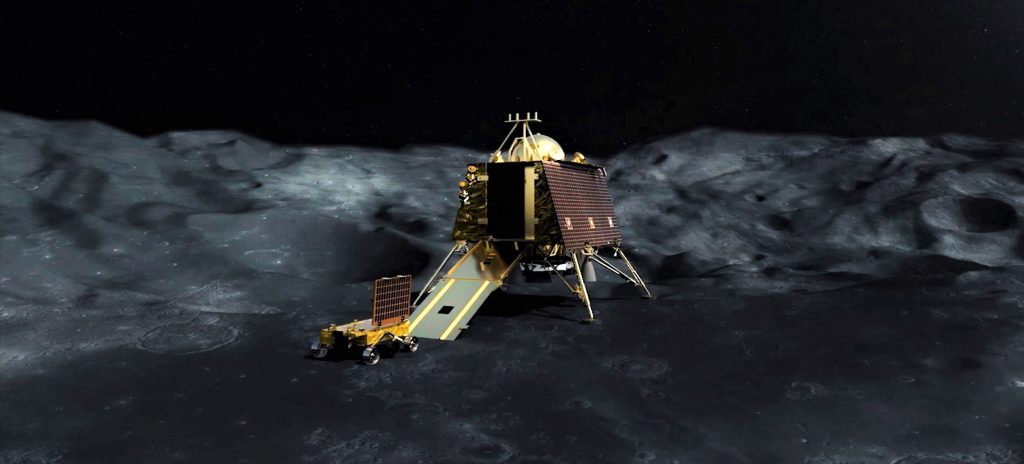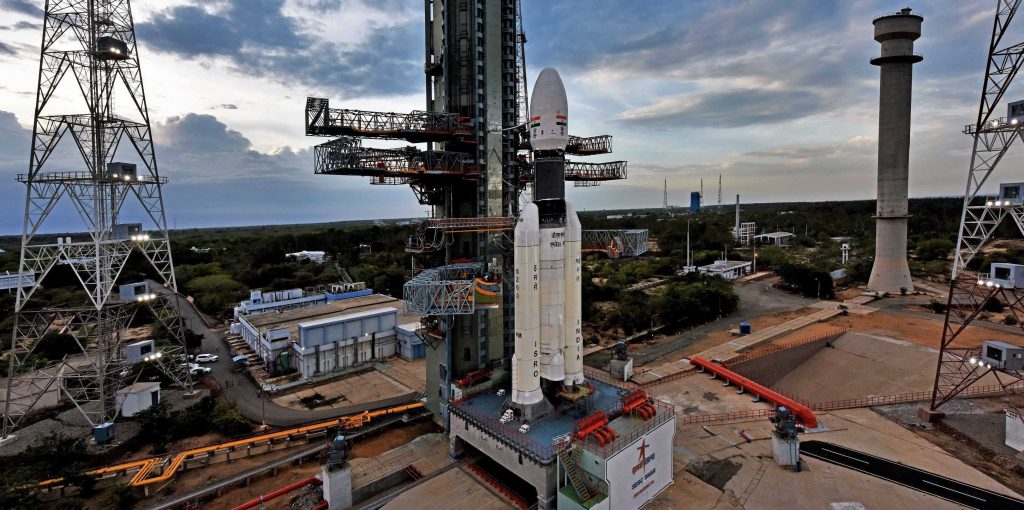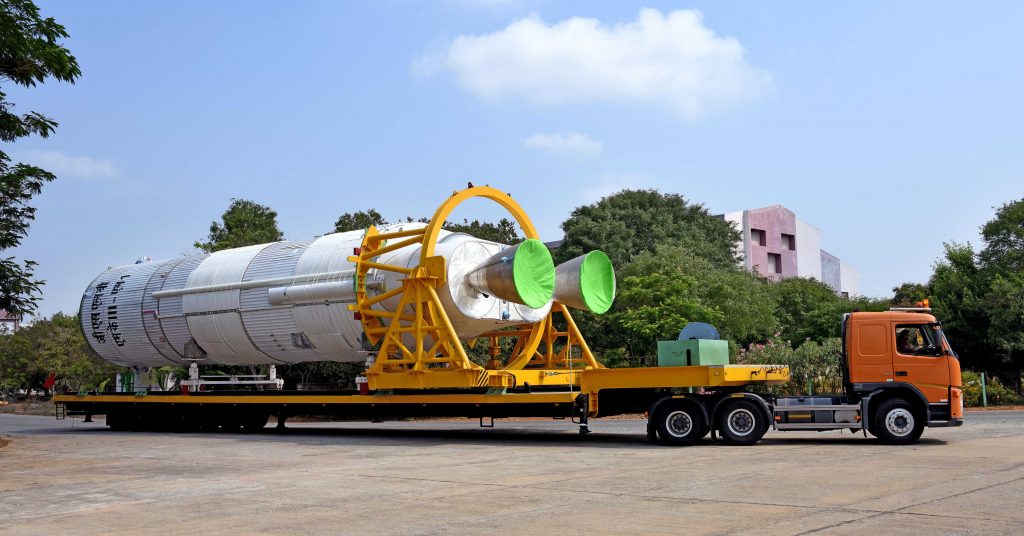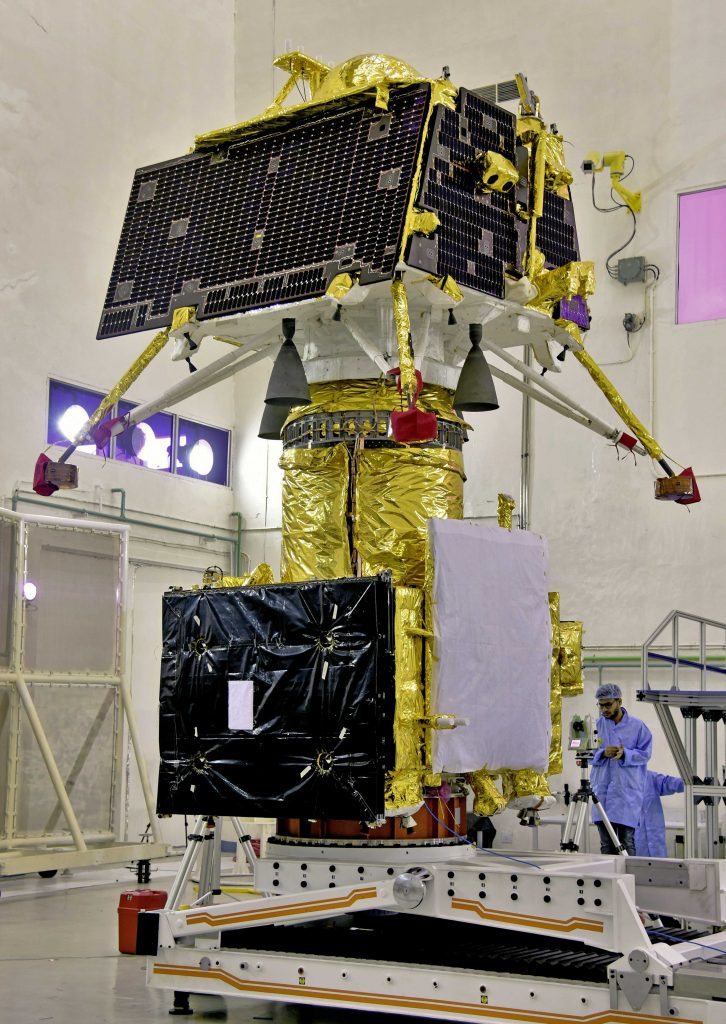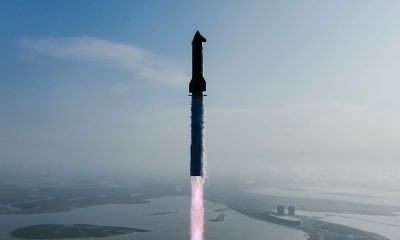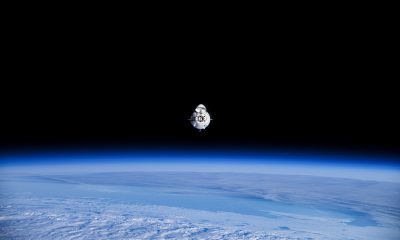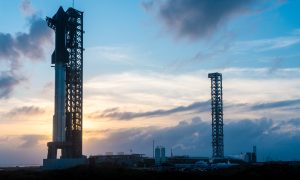

News
India could become the fourth country ever to soft-land a spacecraft on the Moon next week
The Indian Space Research Organization (ISRO) is perhaps just a few weeks (maybe days) away from attempting to place the country in the history books, hopefully setting India up to become the fourth nation on Earth – after the Soviet Union, United States, and China – to successfully soft-land on the Moon.
Known as Chandrayaan-2, the mission seeks to simultaneously launch a lunar orbiter, lander, and rover, altogether weighing nearly 3900 kg (8600 lb) at liftoff. If successful, the trio of spacecraft will remain integrated for about two months as the orbiter slowly raises its Earth orbit to eventually intercept and begin orbiting the Moon. Although originally expected to launch on Sunday, July 14th (July 15th local time), a bug with the Indian-built launch vehicle’s upper stage has pushed Chandrayaan-2 outside its original launch window, which ended today (July 16th). Depending on the complexity of the mission profile ISRO is using, the delay should be no more than a few days to a few weeks before the next launch window opens.
Editor’s note: Following ISRO’s July 15th scrub, the Chandrayaan-2 Moon lander mission has been rescheduled for launch no earlier than (NET) 2:43 pm local time, July 22nd (2:13 am PDT/9:13 UTC, July 23rd).
Fourth to the Moon (in one piece)
- All the way back in 1966, the Soviet Union (USSR) became the first to successfully soft-land an uncrewed spacecraft on the Moon with a mission known as Luna-9. Some four months after the momentous achievement, the United States became the second, safely landing Surveyor-1 on the Moon in June 1966.
- At the height of the space race, huge amounts of money was being funneled into these milestones, permitting the companies, institutions, and space agencies building, launching, and operating the individual missions to almost throw hardware at the metaphorical wall until something stuck. With the Soviet space program, this involved 17 failures, two successes, and one partial success in the first 7 years of the Luna initiative, culminating in Luna 9’s successful landing in February 1966.
- The US had three major separate programs known as Ranger, Lunar Orbiter, and Surveyor, the former of which was meant to simply fly past or impact the Moon to acquire detailed photos of its surface. Ranger suffered five consecutive failures and one partial failure before three full successes, while Orbiter was a complete success (5/5) and Surveyor failed only 2 of 7 attempts.
- Ultimately, this little snippet of history is simply meant to emphasize the utterly different approaches of those pathfinder programs relative to modern exploration efforts. In the case of ISRO’s Chandrayaan-2, failure would likely mean several years of delays before the next possible attempt – there is no concurrent (verging on mass-) production of multiple spacecraft like there was with Surveyor and Luna.
- Just shy of 50 years after the back-to-back first and second soft landings of Luna-9 and Surveyor-1, China became the third nation on Earth to successfully soft-land on the Moon with its 2013 Chang’e-3 mission, featuring a lander and rover. This was followed by Chang’e-4 in 2018, which continues to successfully operate 8 months after achieving the first successful soft-landing on the far side of the Moon.
- Finally, just several months ago, private company SpaceIL – supported by Israeli aerospace company IAI – attempted (albeit unsuccessfully) to make Israel the fourth country to land on the Moon.
Indian spacecraft, Indian rocket
- This finally brings us to Chandrayaan-2, what can only be described as a continuation of a recent resurgence in interest and serious robotic exploration of the Moon. Once it launches, the mission will take roughly 56 days to get into position for an attempted soft-landing. Prior to landing, the orbiter – in a circular, 100-km (62 mi) lunar orbit – will actively scout the intended landing site with a high-resolution ~0.3m/pixel camera to help the lander avoid any dangerous terrain.
- Once complete, the lander – carrying a tiny, ~27 kg (60 lb) rover – will begin its deorbit and landing maneuvers, hopefully culminating in a successful, gentle landing near the Moon’s South pole.
- Sadly, the Vikram lander and Pragyaan rover have an expected life of just one lunar day after landing, translating to ~14 Earth days or ~340 hours. This is a strong indicator that the Chandrayaan-2 landing component was not designed to survive the ultra-cold and harsh lunar night, also ~14 Earth days long.
- This isn’t much of a surprise, as surviving the lunar night is a whole different challenge that is rarely worth the hardware, effort, and funding required until the first prerequisite – a soft landing on the Moon – has been successfully demonstrated.
- A follow-up mission known as Chandrayaan-2 has already been proposed and would likely permit far lengthier exploration of the lunar south pole if India and launch partner Japan choose to move forward with it.
- Chandrayaan-2 will be launched on an Indian-built Geosynchronous Satellite Launch Vehicle (GSLV) Mk III-D2 rocket, the most powerful rocket in India’s arsenal. Although GSLV Mk III weighs significantly more than SpaceX’s
- Falcon 9 when fully fueled (640 metric tons to F9’s 550), the rocket is almost a third less capable to Low Earth Orbit (LEO) – 8000 kg to F9’s ~23,000 kg.
- However, thanks to the development of an efficient liquid hydrogen/oxygen (hydrolox) upper stage and engine, the rocket comes into its own when dealing with its namesake – geostationary (i.e. high-altitude) satellite launches. To GTO, GSLV Mk III is reportedly capable of launching at least 4000 kg, almost half of Falcon 9’s expendable performance and almost 75% as much as Falcon 9 with booster landing.
- Even more impressive is the cost: ISRO purchased a block of 10 GSLV Mk III rockets in 2018 for roughly $630M, translating to ~$63M per rocket, nearly equivalent to Falcon 9’s own list price of $62M. This places GSLV Mk III around the same level as Russia’s Proton-M rocket in terms of a cost-to-performance ratio, still second to Falcon 9 in most cases. GSLV Mk III has only launched three times (all successful) since its 2014 debut and Chandrayaan-2 will be its fourth launch.
News
These Tesla, X, and xAI engineers were just poached by OpenAI
The news is the latest in an ongoing feud between Elon Musk and the Sam Altman-run firm OpenAI.

OpenAI, the xAI competitor for which Elon Musk previously served as a boardmember and helped to co-found, has reportedly poached high-level engineers from Tesla, along with others from xAI, X, and still others.
On Tuesday, Wired reported that OpenAI hired four high-level engineers from Tesla, xAI, and X, as seen in an internal Slack message sent by co-founder Greg Brockman. The engineers include Tesla Vice President of Software Engineering David Lau, X and xAI’s head of infrastructure engineering Uday Ruddarraju, and fellow xAI infrastructure engineer Mike Dalton. The hiring spree also included Angela Fan, an AI researcher from Meta.
“We’re excited to welcome these new members to our scaling team,” said Hannah Wong, an OpenAI spokesperson. “Our approach is to continue building and bringing together world-class infrastructure, research, and product teams to accelerate our mission and deliver the benefits of AI to hundreds of millions of people.”
Lau has been in his position as Tesla’s VP of Software Engineering since 2017, after previously working for the company’s firmware, platforms, and system integration divisions.
“It has become incredibly clear to me that accelerating progress towards safe, well-aligned artificial general intelligence is the most rewarding mission I could imagine for the next chapter of my career,” Lau said in a statement to Wired.
🚨Optimistic projections point to xAI possibly attaining profitability by 2027, according to Bloomberg's sources.
If accurate, this would be quite a feat for xAI. OpenAI, its biggest rival, is still looking at 2029 as the year it could become cash flow positive.💰 https://t.co/pE5Z9daez8
— TESLARATI (@Teslarati) June 18, 2025
READ MORE ON OPENAI: Elon Musk’s OpenAI lawsuit clears hurdle as trial looms
At xAI, Ruddarraju and Dalton both played a large role in developing the Colossus supercomputer, which is comprised of over 200,000 GPUs. One of the major ongoing projects at OpenAI is the company’s Stargate program,
“Infrastructure is where research meets reality, and OpenAI has already demonstrated this successfully,” Ruddarraju told Wired in another statement. “Stargate, in particular, is an infrastructure moonshot that perfectly matches the ambitious, systems-level challenges I love taking on.”
Elon Musk is currently in the process of suing OpenAI for shifting toward a for-profit model, as well as for accepting an investment of billions of dollars from Microsoft. OpenAI retaliated with a counterlawsuit, in which it alleges that Musk is interfering with the company’s business and engaging in unfair competition practices.
Elon Musk confirms Grok 4 launch on July 9 with livestream event
News
SpaceX share sale expected to back $400 billion valuation
The new SpaceX valuation would represent yet another record-high as far as privately-held companies in the U.S. go.

A new report this week suggests that Elon Musk-led rocket company SpaceX is considering an insider share sale that would value the company at $400 billion.
SpaceX is set to launch a primary fundraising round and sell a small number of new shares to investors, according to the report from Bloomberg, which cited people familiar with the matter who asked to remain anonymous due to the information not yet being public. Additionally, the company would sell shares from employees and early investors in a follow-up round, while the primary round would determine the price for the secondary round.
The valuation would represent the largest in history from a privately-owned company in the U.S., surpassing SpaceX’s previous record of $350 billion after a share buyback in December. Rivaling company valuations include ByteDance, the parent company of TikTok, as well as OpenAI.
Bloomberg went on to say that a SpaceX representative didn’t respond to a request for comment at the time of publishing. The publication also notes that the details of such a deal could still change, especially depending on interest from the insider sellers and share buyers.
Axiom’s Ax-4 astronauts arriving to the ISS! https://t.co/WQtTODaYfj
— TESLARATI (@Teslarati) June 26, 2025
READ MORE ON SPACEX: SpaceX to decommission Dragon spacecraft in response to Pres. Trump war of words with Elon Musk
SpaceX’s valuation comes from a few different key factors, especially including the continued expansion of the company’s Starlink satellite internet company. According to the report, Starlink accounts for over half of the company’s yearly revenue. Meanwhile, the company produced its 10 millionth Starlink kit last month.
The company also continues to develop its Starship reusable rocket program, despite the company experiencing an explosion of the rocket on the test stand in Texas last month.
The company has also launched payloads for a number of companies and government contracts. In recent weeks, SpaceX launched Axiom’s Ax-4 mission, sending four astronauts to the International Space Station (ISS) for a 14-day stay to work on around 60 scientific experiments. The mission was launched using the SpaceX Falcon 9 rocket and a new Crew Dragon capsule, while the research is expected to span a range of fields including biology, material and physical sciences, and demonstrations of specialized technology.
News
Tesla Giga Texas continues to pile up with Cybercab castings
Tesla sure is gathering a lot of Cybercab components around the Giga Texas complex.
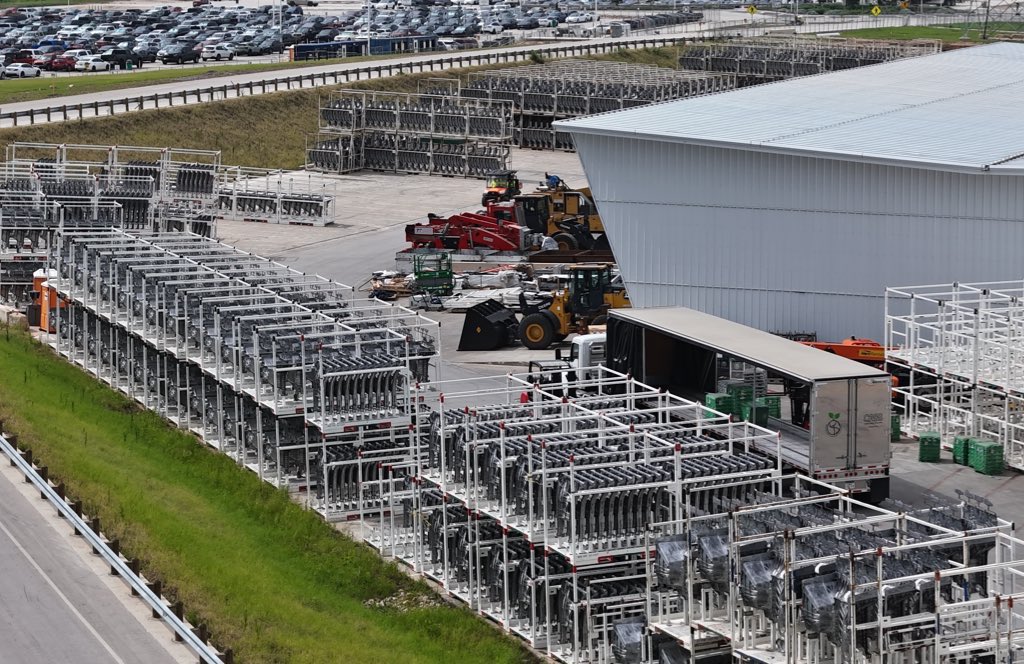
Tesla may be extremely tight-lipped about the new affordable models that it was expected to start producing in the first half of the year, but the company sure is gathering a lot of Cybercab castings around the Giga Texas complex. This is, at least, as per recent images taken of the facility.
Cybercab castings galore
As per longtime drone operator Joe Tegtmeyer, who has been chronicling the developments around the Giga Texas complex for several years now, the electric vehicle maker seems to be gathering hundreds of Cybercab castings around the factory.
Based on observations from industry watchers, the drone operator appears to have captured images of about 180 front and 180 rear Cybercab castings in his recent photos.
Considering the number of castings that were spotted around Giga Texas, it would appear that Tesla may indeed be preparing for the vehicle’s start of trial production sometime later this year. Interestingly enough, large numbers of Cybercab castings have been spotted around the Giga Texas complex in the past few months.
Cybercab production
The Cybercab is expected to be Tesla’s first vehicle that will adopt the company’s “unboxed” process. As per Tesla’s previous update letters, volume production of the Cybercab should start in 2026. So far, prototypes of the Cybercab have been spotted testing around Giga Texas, and expectations are high that the vehicle’s initial trial production should start this year.
With the start of Tesla’s dedicated Robotaxi service around Austin, it might only be a matter of time before the Cybercab starts being tested on public roads as well. When this happens, it would be very difficult to deny the fact that Tesla really does have a safe, working autonomous driving system, and it has the perfect vehicle for it, too.
-

 Elon Musk1 week ago
Elon Musk1 week agoTesla investors will be shocked by Jim Cramer’s latest assessment
-

 News2 weeks ago
News2 weeks agoTesla Robotaxi’s biggest challenge seems to be this one thing
-

 Elon Musk1 day ago
Elon Musk1 day agoElon Musk confirms Grok 4 launch on July 9 with livestream event
-

 News2 weeks ago
News2 weeks agoWatch the first true Tesla Robotaxi intervention by safety monitor
-

 News5 days ago
News5 days agoTesla Model 3 ranks as the safest new car in Europe for 2025, per Euro NCAP tests
-

 Elon Musk2 weeks ago
Elon Musk2 weeks agoA Tesla just delivered itself to a customer autonomously, Elon Musk confirms
-

 Elon Musk2 weeks ago
Elon Musk2 weeks agoElon Musk confirms Tesla Optimus V3 already uses Grok voice AI
-

 Elon Musk2 weeks ago
Elon Musk2 weeks agoxAI welcomes Memphis pollution results, environmental groups push back

